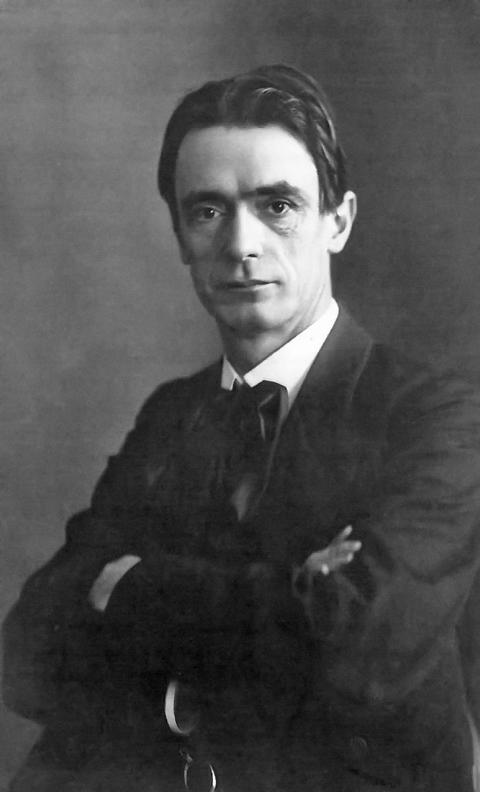Rudolf Steiner and yoga ?
Anthroposophy and its relationship to yoga

Rudolf Steiner (1861 – 1924) was a member of the Theosophical Society in its early years; after the separation, he founded the now well-known Anthroposophy, of which he himself was the head. He researched the relationships in the soul-spiritual worlds to an unprecedented extent and in a detailed description. He was an initiate.
With regard to the question of a contemporary spiritual development of man, he researched yoga philosophies and came to the conclusion that the traditional yoga philosophy was not suitable for modern and Western man, as it was a “backward-looking” spirituality which, in his opinion, did not meet the needs of modern and Western man.
He gave a number of lectures on yoga philosophy and described, for example, how the chakras are arranged in people and practicable mental exercises, as can be read in the book“How to gain knowledge of the higher worlds“. Overall, however, he was anything but a representative of classical yoga. In 1919, he gave a lecture on the “New Yoga Will”
“The old yoga culture and the new yoga will”
In this very significant lecture, he shed light on the development of human consciousness over several thousand years and also described the changes in the human constitution. In his opinion, the Christ event marked a turning point that was accompanied by a change in the air or atmosphere. In the past, yogins still had the opportunity to inhale the divine through breathing (hence the effectiveness of pranayama), as the divine resided in the air. With the Christ event, however, this was no longer possible and since then the air had been de-souled and a new process within spirituality had been born: The point of connection to spirituality is no longer found in the air, but in the light .
He described the change as a shift from the so-called air soul process to the light soul process. What this could mean and what it should change for yoga practice – we will come to this in more detail later in the New Yoga Will.
From this, Rudolf Steiner formulated a new approach to the development of consciousness, which should be future-oriented, in contrast to yoga, which strives for a reconnection to a past state of consciousness. With the “New Yoga Will”, he formulated a future yoga and at the same time provided a spiritual-scientific basis for it. The lecture is included in the paperback Wege der Übung.
Was Steiner’s view shared by other researchers?
Otto Albrecht Isbert (1901 – 1986), an ethnologist, promoted the encounter and dialog between yoga researchers and practitioners of Eastern and Western approaches to consciousness in the yoga scene in Europe.
As he had knowledge of anthroposophy and was aware of Rudolf Steiner’s spiritual scientific approaches (his criticism of traditional Indian yoga, as well as the perspectives of yoga for Western and future human beings), he was able to act as a very good mediator and guide. He wrote some excellent books that are still enjoyable to read today, such as ”
Christian Fuchs commented in his doctoral thesis “The Reception of Yoga in Germany”, 1989 as follows: “O.A. Isbert, who died in 1986, wanted to be understood as an explicit advocate of a close connection between yoga and anthroposophy. In numerous articles, this “old anthroposophist” campaigned for an understanding between the two systems. In his last article on this subject “Anthroposophy and yoga belong together!” Isbert once again expressed his real disappointment at the negative attitude of many anthroposophists: Yoga practitioners … are always faced with a conundrum when they encounter the often haughty, or at least brusque, rejection of our path of practice on the part of today’s anthroposophists. It is indeed astonishing how there is obviously a gap in education within this school of thought, which should be taken quite seriously. For what is currently being written about yoga from the anthroposophical side … is not only meagre, but inadequate and false, perhaps even contemptuous.
By his own admission, Isbert felt that his “mission” was a “lonely caller in the desert”. As he himself stated, the distance between anthroposophists and yoga today is unmistakable.”
A vita about Otto Albrecht Isbert and his efforts to bring anthroposophy and yoga together can be found at Aurora Wiki.
Another researcher who shares this approach is Heinz Grill (born 1960). Over the last 35 years, he has created a modern yoga and spiritual training path that shares Rudolf Steiner’s view that what is needed today is a free spirituality and a new yoga that looks forward to the future and not “backwards” in the sense of a reconnection with the past. He also pays more attention to the light soul processes (thought and sensory activities) than to the air soul processes with their energization via the breath.
In contrast to Steiner, Heinz Grill added the physical exercises and developed them in his life’s work to such an extent that they no longer became a means to an end, but an aesthetic means of expression for the spiritual activities. You can find a detailed description of what this looks like in Heinz Grill and Der Neue Yogawille.
He thus created a synthesis of anthroposophy and yoga. The result was not a new direction in yoga (!), but a completely free approach that is not based on a system or direction.
Book recommendation on the life and work of Rudolf Steiner (paperback)
AnthroWiki – an anthroposophical Wikipedia
AuroraWiki – bringing together natural science and spiritual science
Rudolf Steiner Complete Edition – all works available online
Continue to page: Yoga – Made in America
Bildquellen
- K640_Steiner_um_1905: Wikimedia | Public Domain Mark 1.0
